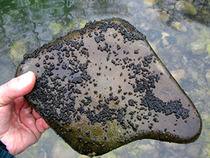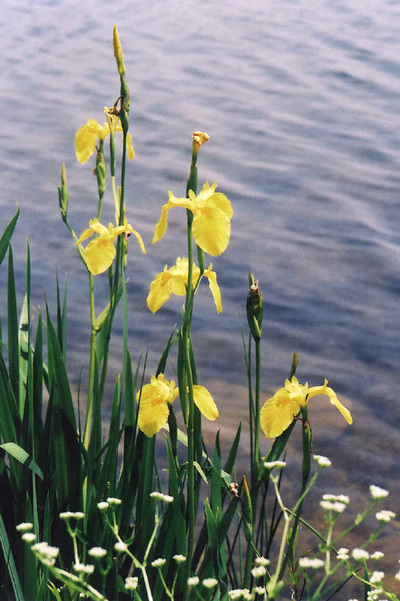New Zealand Mudsnail

What are they: The New Zealand Mudsnail is a small, cone shaped snail. They range in color from tan or grey to dark brown or black. They can reproduce quickly and infected streams they are the dominate species.
New Zealand Mudsnails can survive in a variety of conditions including in salty water, many chemicals, and in very dry conditions. They also can survive in degraded streams with high levels of sediment, nutrients, and low oxygen levels. This means they can survive in streams where many organisms can not.
In their native range, Mudsnails can grow larger and have many predators. Here in the United States, they have limited predators and can have explosive population growth.
New Zealand Mudsnails can survive in a variety of conditions including in salty water, many chemicals, and in very dry conditions. They also can survive in degraded streams with high levels of sediment, nutrients, and low oxygen levels. This means they can survive in streams where many organisms can not.
In their native range, Mudsnails can grow larger and have many predators. Here in the United States, they have limited predators and can have explosive population growth.

Where are they native: Mudsnails are native to New Zealand.
How are they spread: Mudsnails are very small and can hid in crevices of waders, gear, on boats, and in anything in contact with water. Mudsnails also can tolerate dry conditions, and can survive in damp conditions for 2 weeks.
Where are they currently: Mudsnails were once limited to the Western United States. They were found in 2013 in Spring Creek in State College.
How are they spread: Mudsnails are very small and can hid in crevices of waders, gear, on boats, and in anything in contact with water. Mudsnails also can tolerate dry conditions, and can survive in damp conditions for 2 weeks.
Where are they currently: Mudsnails were once limited to the Western United States. They were found in 2013 in Spring Creek in State College.
How to prevent them: Mudsnails can be difficult to remove and clean from gear because of their size and ability to tolerate many chemicals. It is best to thoroughly check for any plant or organic material on your gear and remove it. Then all gear should be scrubbed to remove any unseen organisms. Finally, all gear should be dried for at least 5 days.
Due to the great impact of Mudsnails difficult nature of removal, many anglers have chosen to have gear specific for waterways impacted by Mudsnails. Others choose to no longer fish these streams to prevent the spread.
Due to the great impact of Mudsnails difficult nature of removal, many anglers have chosen to have gear specific for waterways impacted by Mudsnails. Others choose to no longer fish these streams to prevent the spread.






